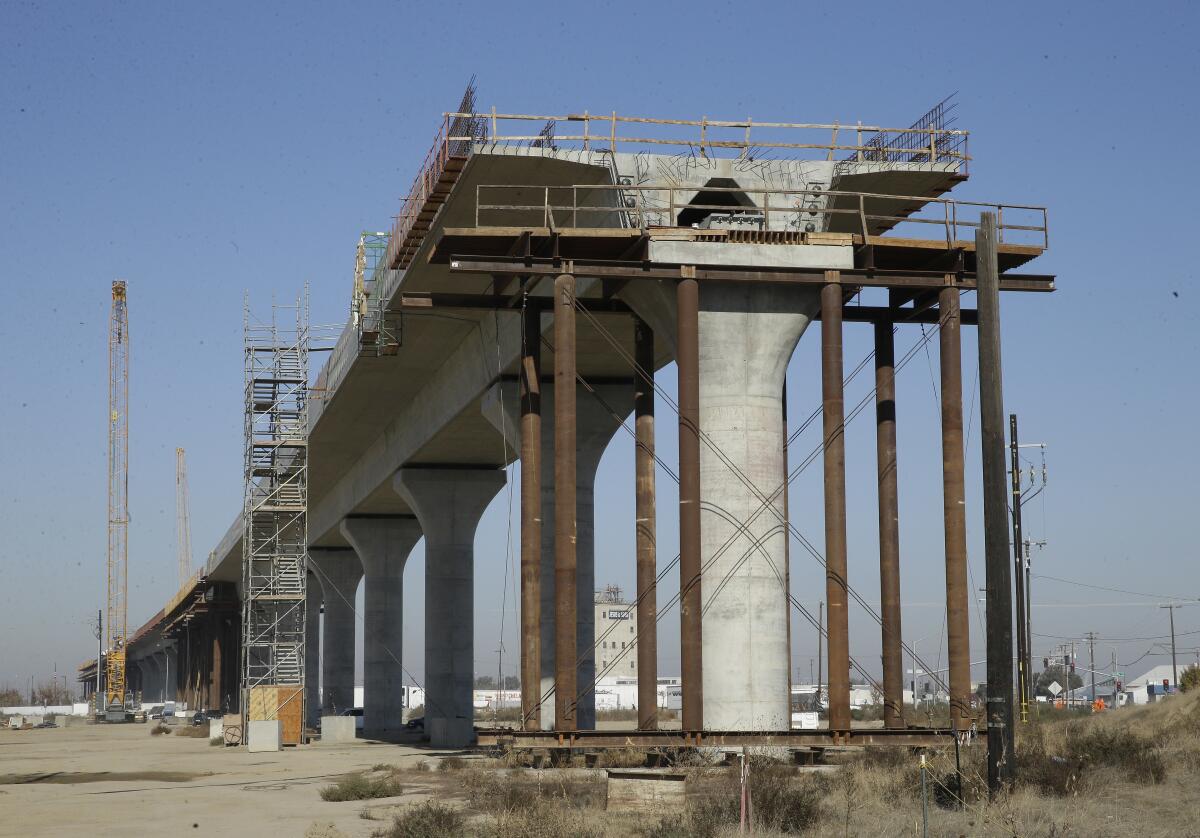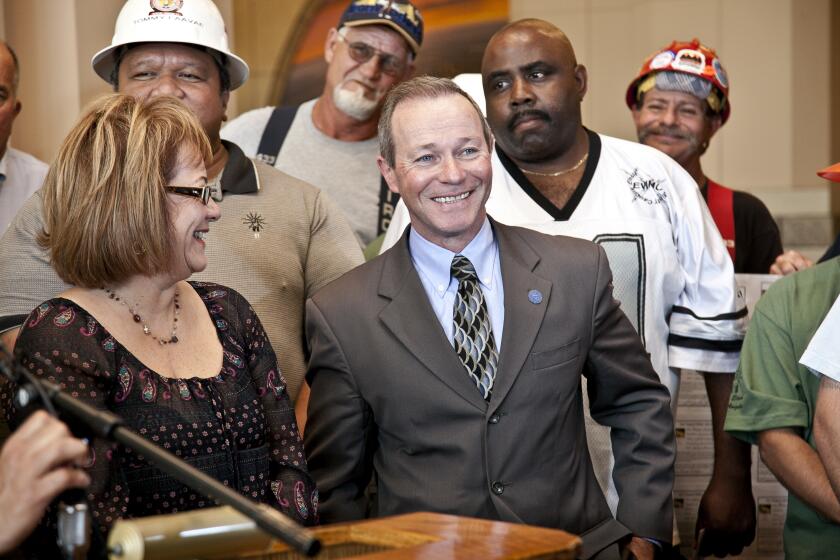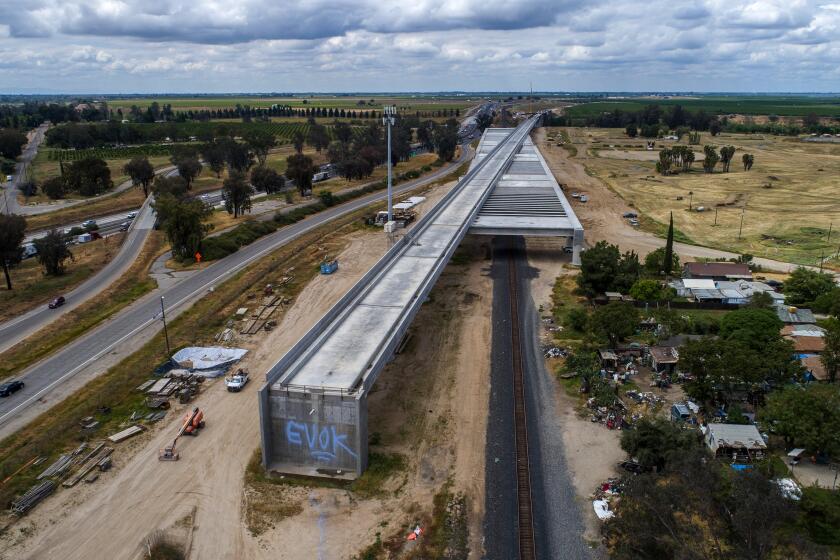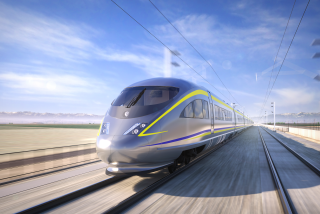Deadlines loom for California bullet train in its search for new funding

As Congress fitfully moves ahead with the largest infrastructure program in recent American history, the California bullet train is still trying to sort out where it will fit in.
A roughly $1-trillion bipartisan package, which has passed the Senate but faces challenges in the House, makes no mention of the stateâs high-speed rail effort, the nationâs largest infrastructure project.
Rep. John Garamendi (D-Walnut Grove), a senior member for the House Transportation & Infrastructure Committee, said he is assessing what language in the lengthy bill may help the project.
âWe are trying to figure out how it might affect California,â he said. âThere is no carve-out for California that we can find, but one word can change that.â
At best, the legislation could fund tens of billions of dollars in new passenger rail programs, but much of that is either already dedicated to other states or will be subject to fierce future competition among all the states.
And whether a $3.5-trillion budget reconciliation package that is moving through Congress might contain vast pockets of buried money for rail project is even less clear.
At a board meeting Wednesday, Brian Kelly, chief executive of the California High-Speed Rail Authority, said he has identified six potential programs that will get additional funding from the infrastructure bill that could help fund the California bullet train. In total the programs contain about $21 billion in new money on top of previously appropriated funds.
âThere is great opportunity before us here,â he said, adding that the future funding should become clear by the end of the month.
Organized labor has provided crucial support for the high-speed rail project, discouraging any straying from Californiaâs current plan.
All of the $21 billion, which is embedded in intercity rail expansion, safety and grade crossing programs, could be up for grabs by other states, as well as competing rail programs across California, including a private effort to build a high-speed train to Las Vegas.
If the state were to get a share proportional to its population, it could see about $2.5 billion of the new money and potentially $4.3 billion of already appropriated money.
Even a portion of that would help stabilize the bullet train construction as the existing $22.8-billion budget faces growing costs that could exceed the available funding. Almost all of that money would go to a 171-mile operating system between Merced and Bakersfield.
The possible new money would do little to fund construction of major links between the Central Valley and Southern California or the Bay Area. Those would cost tens of billions of dollars. (On Thursday, the bullet train board will consider adopting an $18.2-billion plan in a final environmental document for the Bakersfield-to-Palmdale segment).
Officials close to the negotiations say the big winner in the infrastructure spending bill would be Northeast states, where Amtrak operates between Boston and Washington, D.C., grabbing the lionâs share of $66 billion for rail. One key official said the Northeast came in with a unified and well-defined agenda to get the money and succeeded.
âWe know that [Senate Majority Leader Charles E.] Schumer is taking care of the East Coast,â Garamendi said. A significant amount of money is going to rail from Boston to Washington. That is Schumerâs price.â
The prospects for passage of the two legislative packages remains up in the air. On Wednesday, Republican House leader Kevin McCarthy (R-Bakersfield) said he would not support the Senate-passed infrastructure bill, even if it is separated from the larger reconciliation package.
If the funding does survive such obstacles, it also would fall into what is already a growing dispute within the Legislature and the rail authority board over where to allocate it. On Wednesday, two board members said they wanted projects in Southern California and the Bay Area readied for such funding.
Seven years after awarding a low-bid high-speed rail contract to a Spanish firm, California is paying for that decision in delays and cost overruns in the San Joaquin Valley.
Gov. Gavin Newsom is also putting pressure on the Assembly to appropriate $4.2 billion that would complete the 171-mile system in the Central Valley. Assembly Democrats, led by Speaker Anthony Rendon (D-Lakewood), wants some of the $4.2 billion spent on bullet train segments in the urban centers of the state. Meanwhile, Newsom is under pressure to pony up some of the stateâs large budget surplus to the bullet train, a step heâs not taken.
The legislative battle is also expected to play out by the end of August, though the project has enough money in hand to sustain itself for a number of months without the appropriation.
The potential for even greater federal funding may lie in the $3.5 trillion budget reconciliation package, though prospects are vague at best. Rep. Peter DeFazio (D-Ore.), chairman of the transportation committee, has proposed a large carve-out for a national bullet train program. Its prospects are unclear, because an earlier effort to embed high-speed rail funding in the bipartisan infrastructure bill didnât succeed.
More to Read
Sign up for Essential California
The most important California stories and recommendations in your inbox every morning.
You may occasionally receive promotional content from the Los Angeles Times.












